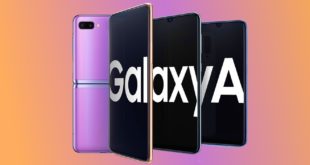
Rumors that Microsoft is working on a dual-screen device, codenamed Andromeda, have popped up online for years, along with various leaked reports, OS references, and patent grants. Now, according to yet another leak, we know it’s also supposed to be a pocket-sized device, presumably of a size comparable to a smart phone or small tablet.
That’s the word from the Verge, which claims to have seen a Microsoft internal document that describes the new Surface Pocket (our descriptor, not Microsoft’s). The email claims “It’s a new pocketable Surface device form factor that brings together innovative new hardware and software experiences to create a truly personal and versatile computing experience,” and it’s said to look like the 3D concept art created by David Breyer.
@zacbowden @h0x0d @windowscentral #Surface Andromeda Render according to the latest patents pic.twitter.com/CmbvlfETtU
— David Breyer (@D_Breyer) December 18, 2017
The problem with these renders is they don’t really show what kind of problem this device is intended to solve. Ars Technica has a related writeup with a discussion of a hinge API that can detect the position the device’s screen(s) are in (closed, concave, convex, flat, or full) and presumably change the function of the device to match it. Well and good. But what’s the actual device supposed to do, be, or represent? In the past, the Surface ![]() family essentially combined an OEM ass-kicking with aspirational product designs. “Build it like THIS,” Microsoft essentially said, when it unveiled its Surface and Surface Pro. And between Surface and Intel’s ultrabook initiative, PC laptop manufacturers unquestionably responded. Devices have become markedly thinner and lighter, with higher resolution displays and longer battery life, even if you’ll pay through the nose for all of these disparate capabilities.
family essentially combined an OEM ass-kicking with aspirational product designs. “Build it like THIS,” Microsoft essentially said, when it unveiled its Surface and Surface Pro. And between Surface and Intel’s ultrabook initiative, PC laptop manufacturers unquestionably responded. Devices have become markedly thinner and lighter, with higher resolution displays and longer battery life, even if you’ll pay through the nose for all of these disparate capabilities.
Retaining control of the OS gives Microsoft some flexibility to approach and built-in UI responses that a company like ZTE didn’t have when it built the Axon M, but all of our criticisms of dual-screen handheld devices still apply here. Specifically, there’s precious little benefit to doubling up on the most fragile, expensive, and power-consuming component in the device. And more than that, there’s the minor problem that Microsoft isn’t in the handheld business anymore. Presumably these are going to be standard Windows 10 devices, only with LTE connectivity presumably baked in. So it’s a phone-sized device you can’t make calls on. Now granted, with usage shifts in devices, not very many people make phone calls these days — but it still seems a little bizarre to think that trend has shifted so dramatically, people now buy phone-sized devices they can’t make phone calls on without viewing this as a loss.
And then there’s that last uncomfortable question: Why would I want one of these when I’ve got a cell phone already? Does Microsoft think the world is so desperate for small Windows devices, everyone would rather have a chunky brick with a fold-out bifurcated screen?
Your guess is as good as mine. And it’s anyone’s guess why a product like this would exist in the first place given that Microsoft has firmly, unambiguously, and completely removed itself from smartphone manufacturing. Six years ago, Microsoft helped show the world what PCs could look like. Now it wants to do the same for product categories it no longer participates in. We won’t be surprised if this product never sees the light of day.
Feature image by David Breyer via Twitter
 #Bizwhiznetwork.com Innovation ΛI |Technology News
#Bizwhiznetwork.com Innovation ΛI |Technology News



